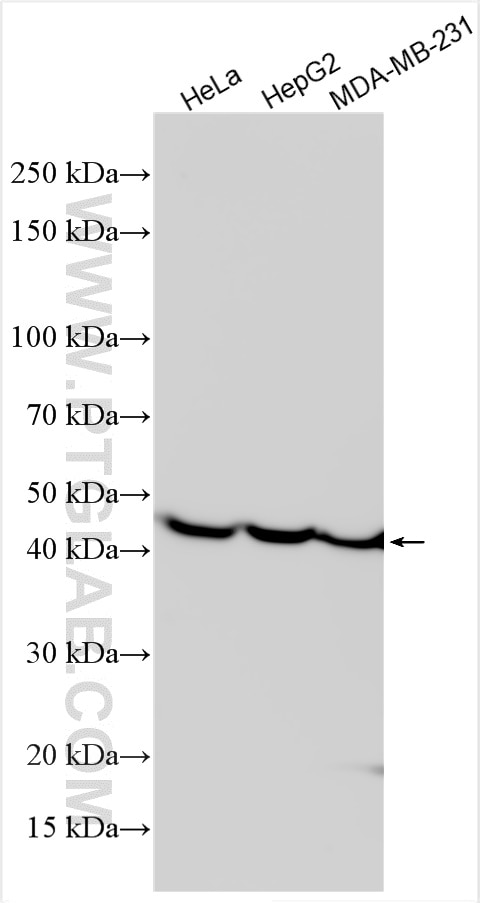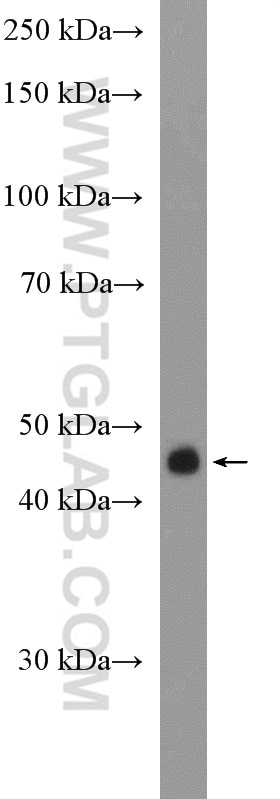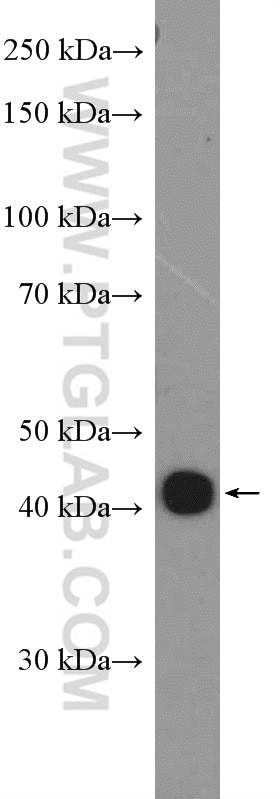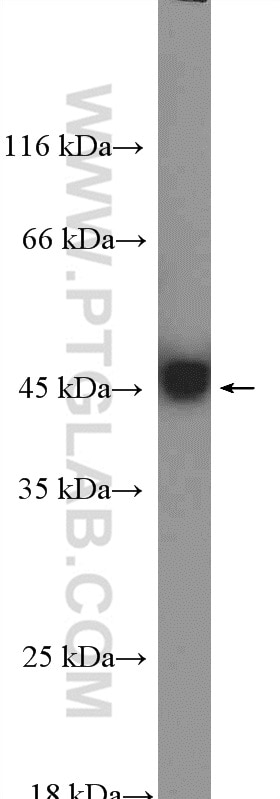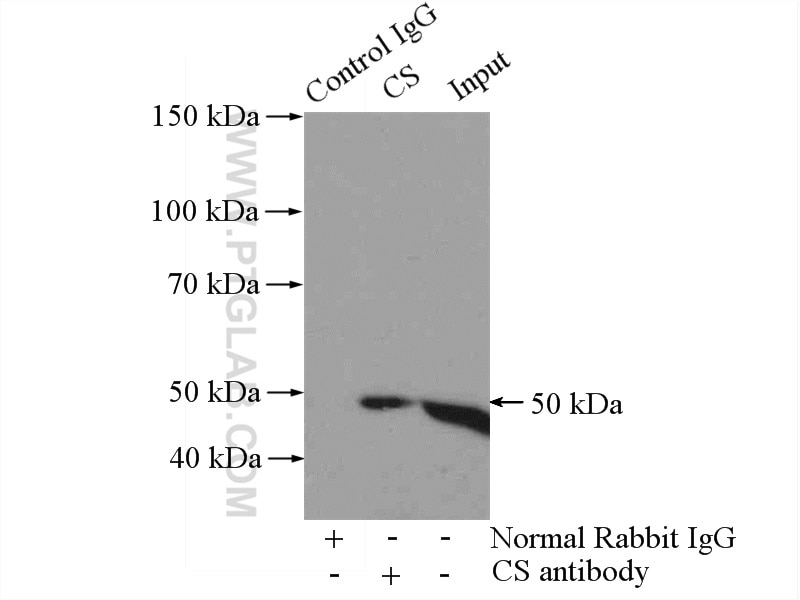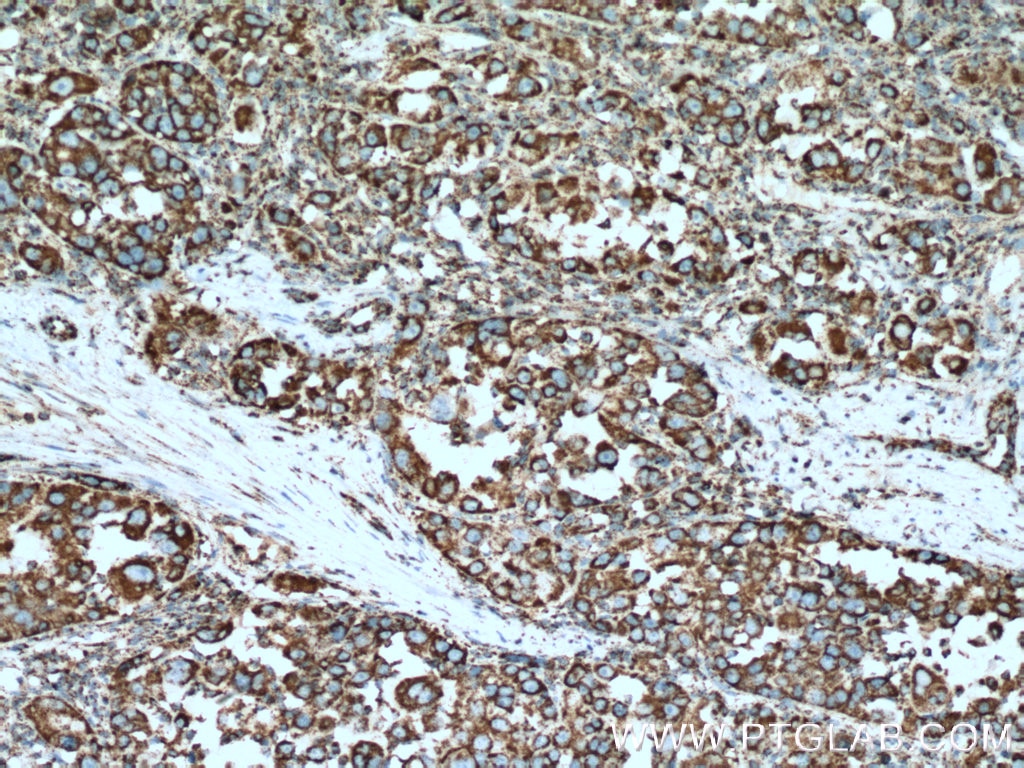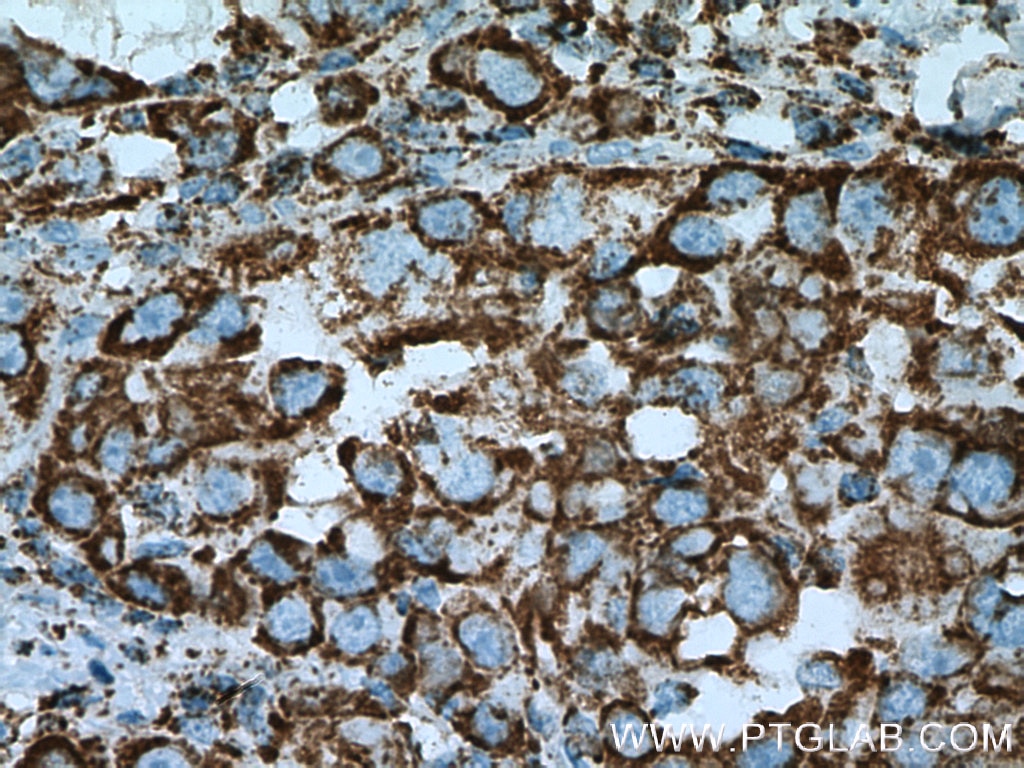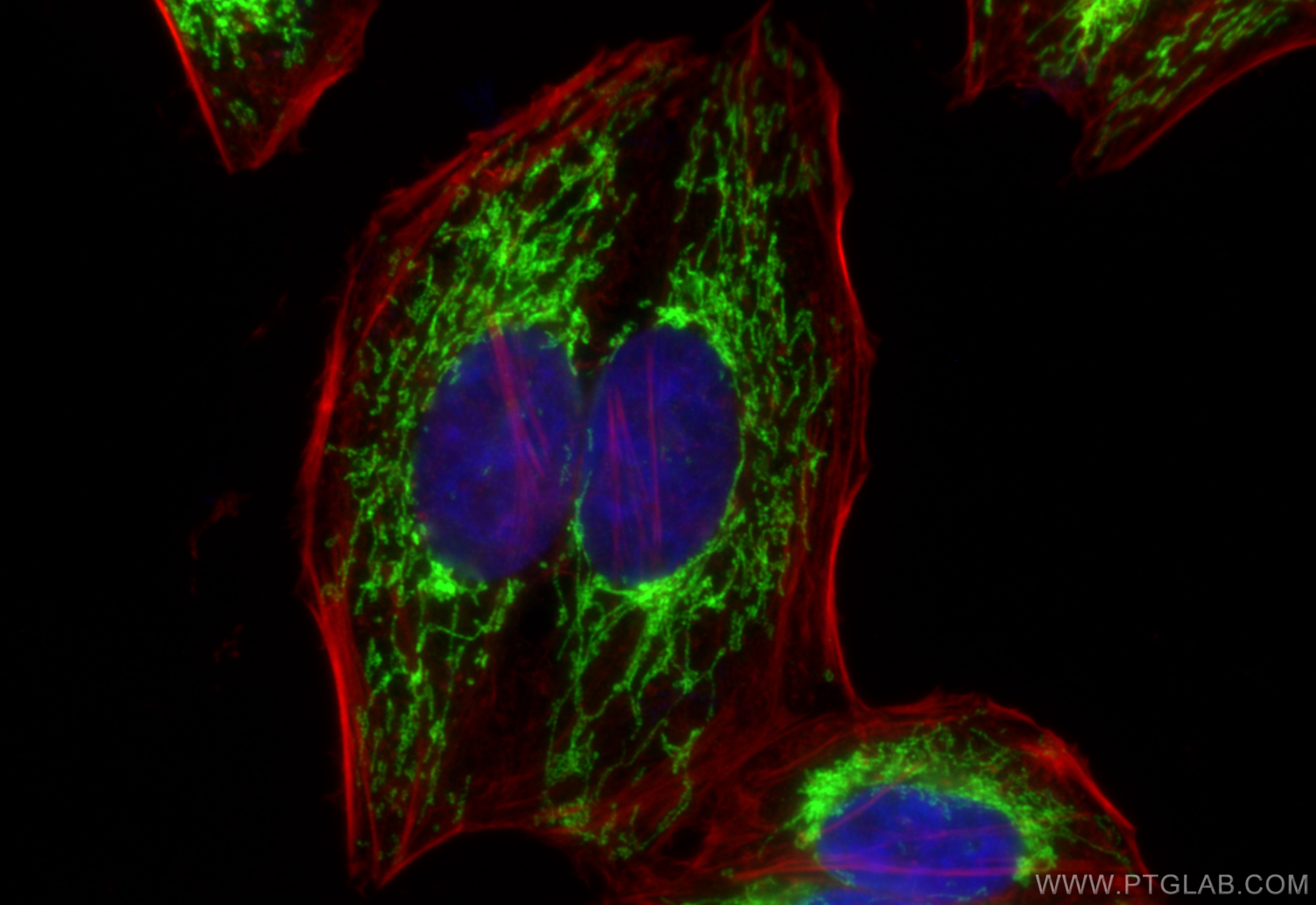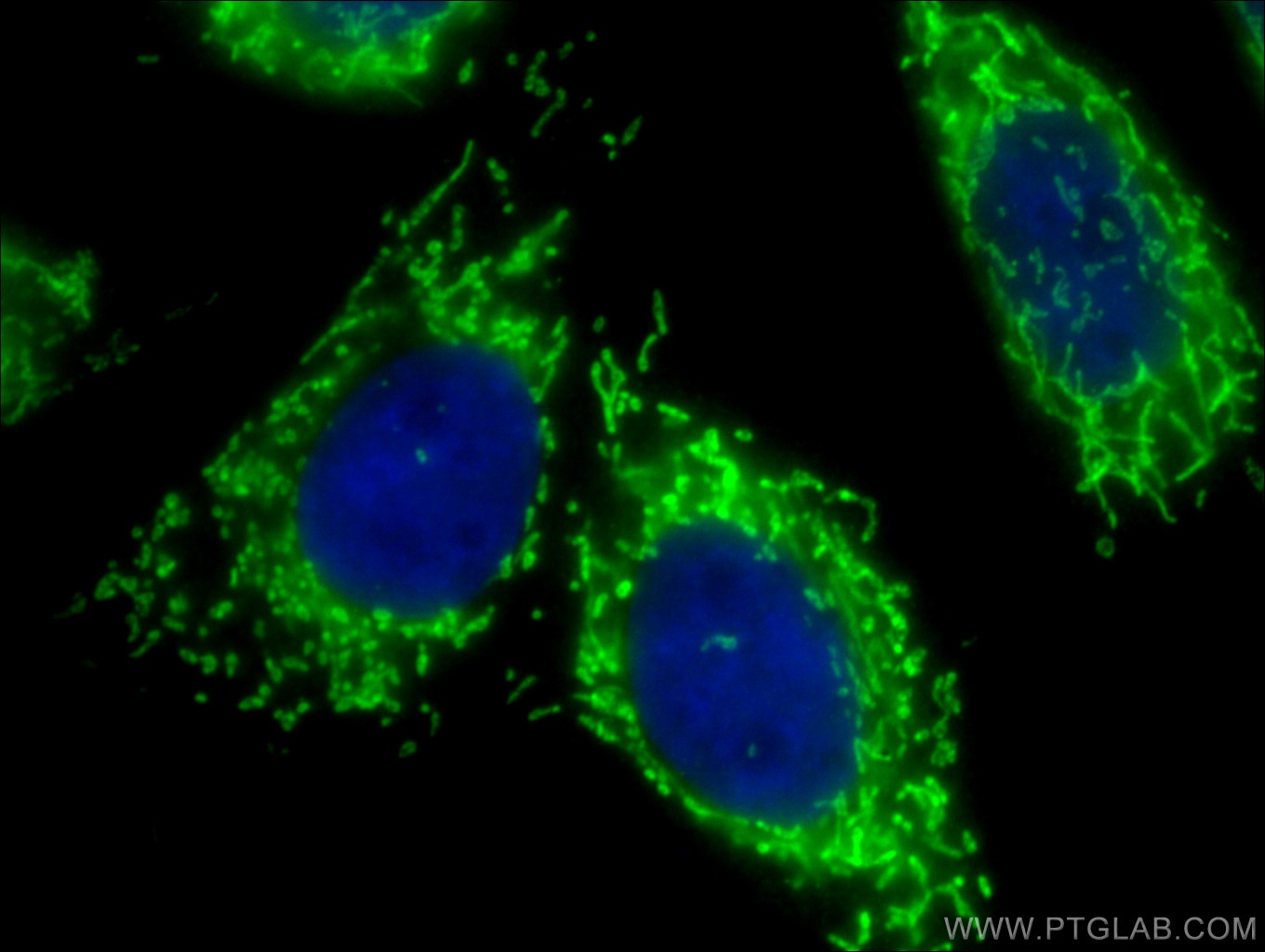Validation Data Gallery
Tested Applications
| Positive WB detected in | HeLa cells, mouse heart tissue, HepG2 cells, MDA-MB-231 cells |
| Positive IP detected in | mouse heart tissue |
| Positive IHC detected in | human liver cancer tissue Note: suggested antigen retrieval with TE buffer pH 9.0; (*) Alternatively, antigen retrieval may be performed with citrate buffer pH 6.0 |
| Positive IF/ICC detected in | HepG2 cells |
Recommended dilution
| Application | Dilution |
|---|---|
| Western Blot (WB) | WB : 1:2000-1:16000 |
| Immunoprecipitation (IP) | IP : 0.5-4.0 ug for 1.0-3.0 mg of total protein lysate |
| Immunohistochemistry (IHC) | IHC : 1:100-1:400 |
| Immunofluorescence (IF)/ICC | IF/ICC : 1:50-1:500 |
| It is recommended that this reagent should be titrated in each testing system to obtain optimal results. | |
| Sample-dependent, Check data in validation data gallery. | |
Published Applications
| KD/KO | See 1 publications below |
| WB | See 77 publications below |
| IHC | See 4 publications below |
| IF | See 10 publications below |
| IP | See 3 publications below |
| CoIP | See 1 publications below |
Product Information
16131-1-AP targets Citrate synthase in WB, IHC, IF/ICC, IP, CoIP, ELISA applications and shows reactivity with human, mouse, rat samples.
| Tested Reactivity | human, mouse, rat |
| Cited Reactivity | human, mouse, rat, rabbit, chicken, hamster |
| Host / Isotype | Rabbit / IgG |
| Class | Polyclonal |
| Type | Antibody |
| Immunogen |
CatNo: Ag9117 Product name: Recombinant human CS protein Source: e coli.-derived, PGEX-4T Tag: GST Domain: 132-466 aa of BC010106 Sequence: EQVSWLSKEWAKRAALPSHVVTMLDNFPTNLHPMSQLSAAVTALNSESNFARAYAQGISRTKYWELIYEDSMDLIAKLPCVAAKIYRNLYREGSGIGAIDSNLDWSHNFTNMLGYTDHQFTELTRLYLTIHSDHEGGNVSAHTSHLVGSALSDPYLSFAAAMNGLAGPLHGLANQEVLVWLTQLQKEVGKDVSDEKLRDYIWNTLNSGRVVPGYGHAVLRKTDPRYTCQREFALKHLPNDPMFKLVAQLYKIVPNVLLEQGKAKNPWPNVDAHSGVLLQYYGMTEMNYYTVLFGVSRALGVLAQLIWSRALGFPLERPKSMSTEGLMKFVDSKSG 相同性解析による交差性が予測される生物種 |
| Full Name | citrate synthase |
| Calculated molecular weight | 466 aa, 52 kDa |
| Observed molecular weight | 45-50 kDa |
| GenBank accession number | BC010106 |
| Gene Symbol | Citrate Synthase |
| Gene ID (NCBI) | 1431 |
| RRID | AB_1640013 |
| Conjugate | Unconjugated |
| Form | |
| Form | Liquid |
| Purification Method | Antigen affinity purification |
| UNIPROT ID | O75390 |
| Storage Buffer | PBS with 0.02% sodium azide and 50% glycerol{{ptg:BufferTemp}}7.3 |
| Storage Conditions | Store at -20°C. Stable for one year after shipment. Aliquoting is unnecessary for -20oC storage. |
Background Information
Citrate synthase (CS), the first and rate-limiting enzyme of the tricarboxylic acid cycle, plays a key role in regulating energy generation of mitochondrial respiration(PMID:19479947).It belongs to the citrate synthase family. The deduced 466-amino acid protein contains an N-terminal mitochondrial targeting sequence and a motif highly conserved in citrate synthases(PMID:12549038). It can exsit as a dimer(PMID:8749851). Northern blot analysis detected no CS expression in thymus and small intestine(PMID:12549038). This antibody is specific to CS.
Protocols
| Product Specific Protocols | |
|---|---|
| IF protocol for Citrate synthase antibody 16131-1-AP | Download protocol |
| IHC protocol for Citrate synthase antibody 16131-1-AP | Download protocol |
| IP protocol for Citrate synthase antibody 16131-1-AP | Download protocol |
| WB protocol for Citrate synthase antibody 16131-1-AP | Download protocol |
| Standard Protocols | |
|---|---|
| Click here to view our Standard Protocols |
Publications
| Species | Application | Title |
|---|---|---|
Adv Mater Supramolecular Hydrogel with Ultra-Rapid Cell-Mediated Network Adaptation for Enhancing Cellular Metabolic Energetics and Tissue Regeneration | ||
Nat Cell Biol Breast-cancer-secreted miR-122 reprograms glucose metabolism in premetastatic niche to promote metastasis. | ||
ACS Cent Sci A Selective SARS-CoV-2 Host-Directed Antiviral Targeting Stress Response to Reactive Oxygen Species | ||
Mol Cell Filamentous GLS1 promotes ROS-induced apoptosis upon glutamine deprivation via insufficient asparagine synthesis. | ||
Nat Commun Lin28/let-7 axis regulates aerobic glycolysis and cancer progression via PDK1. |

